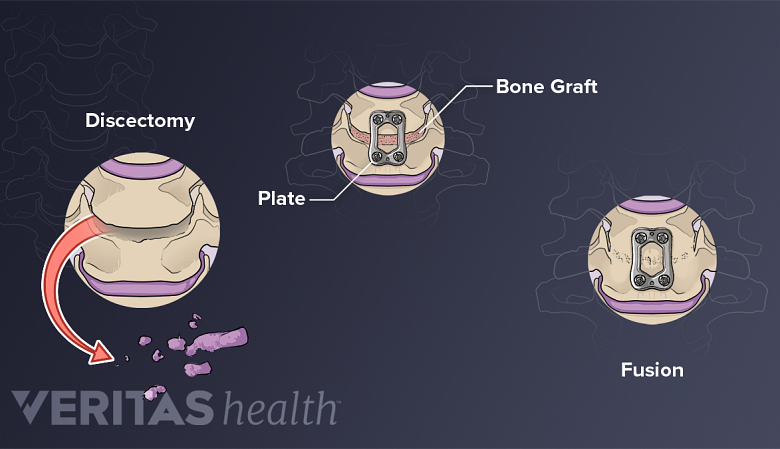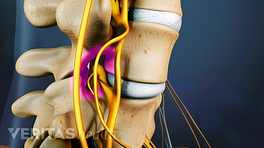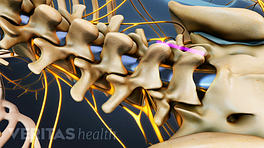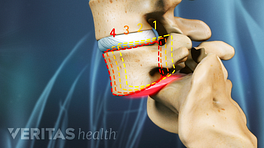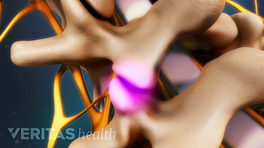The most common kinds of spine surgery for synovial cysts can be either a decompression alone or a decompression with a spine fusion.
In This Article:
- Synovial Cyst in the Lumbar Spine
- Synovial Cyst Symptoms and Diagnosis
- Treatment Options for Synovial Cysts
- Spine Surgery for Synovial Cysts
Microdecompression Spine Surgery
If there is no associated instability with the cyst (e.g. no degenerative spondylolisthesis as seen on flexion/extension x-rays), then a microdecompression of the nerve root with removal of the cyst is reasonable. Basically, this is the same approach as would be used for a microdiscectomy, and is a minimally invasive surgery with a relatively quick recovery.
See Microdiscectomy (Microdecompression) Spine Surgery
However, since the joint pathology that caused the original synovial cyst is still present, the cyst can re-form at a later date.
Decompression with Spine Fusion Surgery
Cyst removal combined with joint fusion is an effective approach for treating synovial cysts.
The most reliable treatment method for a synovial cyst is to remove the cyst and then fuse the joint. Fusing the joint stops all the motion at that level of the spine, and without any motion, the cyst should not regenerate.
This is the most reliable treatment, but it is also an extensive surgery for the patient. It changes the biomechanics in the back because one of the joints will no longer function. The L4-L5 level has the most motion, and fusing it creates more stress on the other non-fused levels of the lower spine. Also, the surgery is more to go through since a fusion is an open procedure, and it takes about six to nine months or more for the fusion to heal.
Read more: Lumbar Spinal Fusion Surgery
Typically, the decompression and fusion are done as part of the same operative procedure.
Decision-Making Factors for Patients
When deciding which treatment to pursue, patients need to base their decisions on three primary factors:
- The amount of pain they are having
- The length of time of their symptoms
- The amount of dysfunction it causes in their life
If the pain is relatively acute and tolerable, it is probably reasonable for the patient to modify his or her activities. If the pain is severe, then an injection might be more reasonable. If the pain is severe and has been going on for a while (e.g. years), or if the injections have not worked, then surgery is more reasonable.
See Considering Spine Surgery? What You Need to Know
For younger, more active patients, a trial of a microdecompression is probably a reasonable consideration, as long as there is no gross instability of the joints. A microdecompression surgery is done with the knowledge that a fusion may be necessary in the future. For more elderly or less active patients, it may be more reasonable to jump to the definitive procedure of a fusion, since the stress transfer the fusion creates to the other joints is not as great in these patients and only one procedure would then be necessary.
Surgery Considerations and Success Rates
Surgery is only necessary for those patients that would like to do more activity with less pain. The surgery is very effective for treatment of this condition.
The most successful surgery tends to be a decompression with a fusion. (approximately a 90-95% success rate should be expected, which means a significant reduction in pain, not necessarily pain free). However, this type of surgery is also the treatment that is the hardest to go through, and changes the biomechanics of the spine. It should be considered for people with moderate to severe activity limitations that have joint instability along with the cyst, and who have failed non-surgical treatments such as injections.

